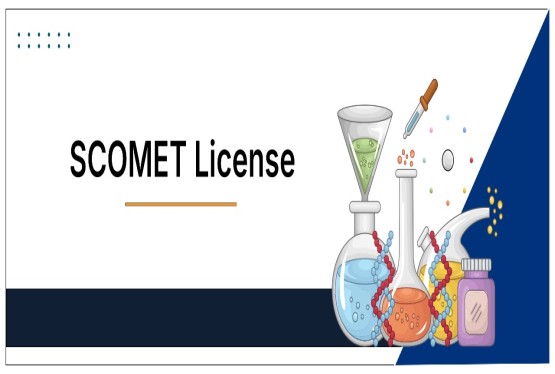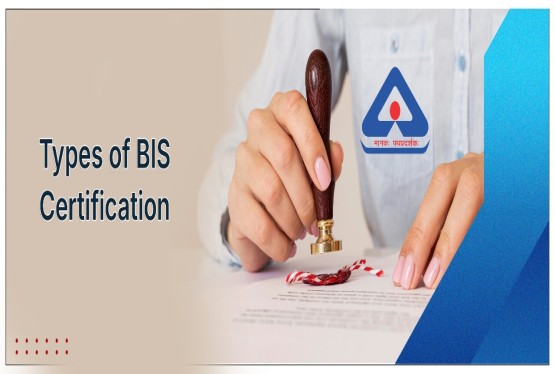A wireless microphone, also known as a cordless microphone, is a key innovation in audio technology that allows users to communicate or perform without the restriction of physical cables. It is extensively used in television broadcasting, public events, the entertainment industry, and even educational sessions. The microphone transmits the sound using VHF (Very High Frequency) or UHF (Ultra High Frequency) radio bands to a receiver, which is connected to sound amplification or recording equipment. This allows complete freedom of movement for the speaker or performer.
To ensure the safety and quality of such electronic products, the Bureau of Indian Standards (BIS) has brought wireless microphones under its Compulsory Registration Scheme (CRS). As per the BIS notification published in the Gazette of India on April 1, 2021, wireless microphones must comply with IS 616:2017—a standard based on the IEC 60065:2014 for audio and video equipment safety. This makes it mandatory for both domestic and foreign manufacturers to obtain BIS Certification for Wireless Microphones before introducing their products into the Indian market.
BIS CRS Scheme
The Bureau of Indian Standards (BIS) is the national standards body in India, established under the BIS Act 2016. It ensures that products sold in India meet the required quality, safety, and reliability standards. Under Scheme II of Schedule II of the BIS (Conformity Assessment) Regulations, 2018, BIS operates the Compulsory Registration Scheme (CRS).
The main goal of CRS is to regulate the fast-growing electronics and IT sector in India by mandating safety compliance for certain product categories. This helps protect consumer interest, avoid the sale of substandard goods, and strengthen India's regulatory framework for imports and domestic manufacturing.
The BIS CRS Certification for Wireless Microphones ensures that the product has undergone quality testing and complies with all safety standards laid down by Indian regulations.
BIS Certification for Wireless Microphones under IS 616:2017
Wireless microphones fall under the purview of IS 616:2017, which prescribes safety standards for audio, video, and similar electronic apparatus. This standard includes guidelines on electrical safety, radiation exposure, construction quality, and performance under various environmental conditions.
All manufacturers—whether Indian or foreign—are required to get BIS Certification for Wireless Microphones before their product is manufactured, imported, distributed, or sold in India. Only the original manufacturer is eligible for this certification. Importers, retailers, and distributors are not allowed to apply for BIS certification in their own name. However, foreign manufacturers must appoint an Authorized Indian Representative (AIR) to act on their behalf during the certification process.
Components and Technical Specifications of a Wireless Microphone
A wireless microphone consists of three major components:
-
Input Source – This is the actual microphone that picks up the sound.
-
Transmitter – The transmitter converts the audio signal into a radio frequency signal and sends it wirelessly.
-
Receiver – The receiver picks up the radio signal and converts it back into an audio signal, which is then fed into the amplifier or speaker system.
Advanced wireless microphones come with balanced outputs for noise-free transmission, rechargeable batteries for long hours of usage, and dedicated mute or power switches to avoid interference. Some models even feature high/low signal strength settings to save battery and quick charging options.
Basic Requirements to Apply for BIS Certification
The process of obtaining the BIS Certification for Wireless Microphones is based on four fundamental pillars:
1. Manufacturer
The license is issued only to the actual manufacturer of the product. Importers or sellers are not eligible to apply for BIS. However, they can assist foreign manufacturers by acting as their AIR in India. The certification is ultimately granted in the name of the manufacturing entity.
2. Manufacturing Address
The correct and complete manufacturing unit address must be mentioned in the application. If a manufacturer has multiple factory locations producing the same product, they must apply for a separate BIS certificate for each location.
3. Product
A unique license is issued for every product category. However, if the same product model has variations under the same category, a single license can cover all variants. For example, multiple models of wireless microphones under one product family can be included under a single certification.
4. Brand/Trademark
Each brand or trademark requires a separate BIS license. If the same manufacturer is making wireless microphones under different brand names, they must apply for separate certifications for each brand.
BIS Registration Process for Wireless Microphones
The BIS registration process for wireless microphones differs for Indian and foreign manufacturers. Let’s understand both procedures in detail.
A) For Foreign Manufacturers
Foreign manufacturers must follow these steps to obtain BIS certification:
-
Nomination of Authorized Indian Representative (AIR): Foreign applicants must appoint a local representative in India who will be responsible for communication with BIS and submission of documents.
-
Online Application Submission: Fill out and submit the application on the BIS registration portal.
-
Product Testing: Send the product sample to a BIS-recognized laboratory for testing as per IS 616:2017.
-
Submit Application with Test Report: Upload the soft copy and submit the hardcopy of the application along with the test report and supporting documents.
-
Application Review by BIS: BIS officials will review and verify the submitted details.
-
Grant of License: Upon successful verification, the BIS certification is issued.
Guidelines for Appointing an AIR
-
If the manufacturer has a liaison office in India, it will be designated as the AIR.
-
If there is no liaison office, the brand/trademark owner based in India can become the AIR.
-
If neither is available, a third-party entity in India may be appointed as the AIR.
B) For Indian Manufacturers
Indian manufacturers need to follow these steps:
-
Online Application Submission: The applicant must register and submit the online application form.
-
Sample Testing: The wireless microphone sample must be sent to a BIS-approved testing lab.
-
Attach Documents and Test Report: The test report and all documents must be uploaded to the BIS portal and submitted in hardcopy if required.
-
Verification by BIS: Officials will examine the details and cross-check the report.
-
License Issuance: The BIS license will be granted if all information is in order.
Documents Required for BIS Certification for Wireless Microphones
The following documents are essential for applying for BIS Certification for Wireless Microphones:
-
Duly filled Construction Data Form (CDF) and Critical Component List (CCL)
-
BIS application form (completely filled and signed)
-
Business license of the manufacturing unit (in English and local language)
-
ISO certificate of the manufacturer
-
Product label and marking information
-
Trademark certificate and authorization letter (if trademark is owned by someone else)
-
Letter of authorization (if the signatory is not the manufacturer’s head)
-
Technical specification sheet or user manual
-
Photo ID proof of the AIR (for foreign manufacturers)
-
Registration certificate of the AIR (if applicable)
-
Test reports from BIS-approved lab
It is important that all documents are signed by the manufacturer, brand owner, and AIR. Moreover, all signatures must be notarized and stamped.
Testing Parameters for Wireless Microphones under IS 616:2017
The wireless microphones are tested based on the safety and quality standards defined in IS 616:2017 / IEC 60065:2014. The following tests are performed in BIS-certified laboratories:
-
Radiation and electrical safety tests
-
Heat resistance test
-
Mechanical strength test
-
Insulation and wiring tests
-
Marking and labeling compliance
-
Communication and connection integrity test
-
Splash resistance (if applicable)
-
Physical and component durability tests
Only BIS-recognized labs are authorized to conduct these tests. Test reports remain valid for 90 days, within which the application must be submitted to BIS.
Key Points to Remember Before Applying for BIS for Wireless Microphones
-
Choose a BIS-recognized testing laboratory with a valid, non-suspended license.
-
Ensure your sample shipment to the lab is fully prepared with no logistics delay.
-
Make sure all application forms and documents are complete before testing.
-
Use the correct format for the CDF and CCL, and provide accurate technical specifications.
-
Be aware of the 90-day validity period for the test report.
-
The certification process generally takes around 15 to 30 days, but it can extend to 60 days based on document verification.
Benefits of BIS CRS Certification for Wireless Microphones
Obtaining the BIS CRS Certification for Wireless Microphones offers several advantages:
-
Enables legal manufacturing, sale, and import of wireless microphones in India
-
Boosts consumer confidence by ensuring product quality and safety
-
Reduces risk of rejection at customs or penalties for non-compliance
-
Enhances brand reputation and market presence in India
-
Increases business opportunities and sales by complying with government norms
Conclusion
BIS Certification for Wireless Microphones is mandatory for all manufacturers—whether domestic or foreign—before they can introduce their products into the Indian market. The certification ensures compliance with IS 616:2017, maintaining product safety, performance, and reliability. It protects consumers from unsafe and poor-quality products and also helps manufacturers strengthen their presence in the Indian electronics market.
If you need any support in obtaining BIS Certification, then you can book a consultation with BIS experts through email info@ccoffice.in or Call/Whatsapp at +91 9988424211.
FAQs
Q1. Is BIS Certification mandatory for Wireless Microphones in India?
Ans. Yes, BIS Certification is mandatory for all wireless microphones under the Compulsory Registration Scheme (CRS) as per Indian Standard IS 616:2017. No wireless microphone can be manufactured, sold, or imported in India without valid BIS approval.
Q2. Who can apply for BIS Certification for Wireless Microphones?
Ans. Only the manufacturer of the wireless microphone can apply for BIS certification. Importers, dealers, or retailers are not eligible. However, foreign manufacturers must appoint an Authorized Indian Representative (AIR) to apply on their behalf.
Q3. What is the BIS CRS Certification for Wireless Microphones?
Ans. BIS CRS Certification refers to the Compulsory Registration Scheme under Scheme II, which mandates certain electronic goods, including wireless microphones, to comply with Indian safety standards. This ensures that products meet quality benchmarks before entering the Indian market.
Q4. What standard is applicable to Wireless Microphones for BIS Certification?
Ans. Wireless Microphones must comply with the Indian Standard IS 616:2017, which outlines the safety requirements for audio, video, and similar electronic apparatus. It is aligned with the international standard IEC 60065:2014.
Q5. How long is the BIS test report valid for Wireless Microphones?
Ans. The test report issued by a BIS-approved laboratory is valid for 90 days from the date of issuance. The manufacturer must submit the BIS application within this time frame, or else a new sample test will be required.
Q6. Can one BIS License cover multiple models of Wireless Microphones?
Ans. Yes, if all the models belong to the same product category and share similar technical specifications, one BIS license can cover multiple models. However, separate licenses are needed for different product categories or brands.
Q7. How long does it take to get BIS Certification for Wireless Microphones?
Ans. If all documents and test results are in order, BIS usually takes around 15–30 days to process and grant the certificate. In some cases, it may extend up to 60 days, depending on the completeness of documentation and internal verification.
Q8. What are the consequences of selling Wireless Microphones without BIS Certification in India?
Ans. Selling wireless microphones without BIS Certification is a violation of Indian law. It may result in confiscation of goods, monetary penalties, and prosecution under the BIS Act, 2016. It also affects brand reputation and restricts product entry at customs.












































































_crop10_thumb.jpg)







_Rules,_2025_learn_crop10_thumb.jpg)




























































